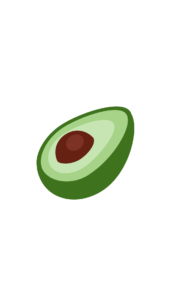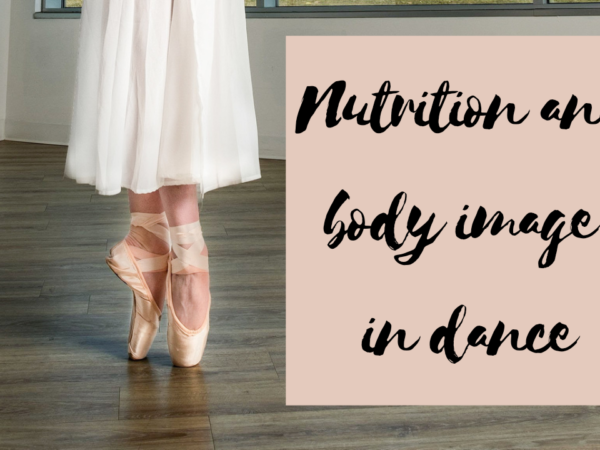Let’s break down hunger cues for dancers.
Dancers can especially struggle with hunger cues and mixed signals when it comes to food. Diet culture, food rules, poor body image, disordered eating, and using food as a coping mechanism all affect our relationship to food and to our bodies. Not only do they cause us to overthink meal times and induce anxiety around situations with food, but they also alter our ability to be able to listen to our hunger and fullness cues.
It can be frustrating to feel out of control around certain foods, or unable to stop eating until you reach the point of absolute discomfort. When I found myself here, I felt defeated. I just wanted to eat like a “normal” person. I didn’t want to have to worry about eating perfectly, and feel consumed by food. I could not concentrate on my dancing because I was not giving my body enough energy, yet food and food choices were constantly on my mind.
The journey towards intuitive eating and re-establishing hunger and fullness cues can be a long and sometimes frustrating process. It’s not always straight-forward, and sometimes it feels like traveling backwards before making any progress. But working towards balance in intuitive eating provides so many little victories that fuel the process towards reconnecting your mind and body and healing your relationship with food.
What are hunger cues?
Hunger cues are our body’s way of indicating that we need energy from food. It is typically portrayed as a rumbling in your stomach, but there are so many other cues that our body can give us. Lack of energy, loss of concentration, feeling light headed, and even being grumpy and irritable are just a few cues that you might notice when you are hungry. It is important to note that you might have a range of different hunger cues that vary depending on the situation. For example, during a long dance day, I usually feel shaky, weak, and have trouble concentrating when I am hungry. When I am in a restful state, I usually am more tired and cranky when I need to fuel my body.
Hunger cues are different from cravings. We can have physical cravings as well as psychological cravings, but they both often drive us to food for the solution. Hunger cues indicate physical cravings for food. After recognizing your hunger, you can work towards honoring what your body needs by seeing what foods you are gravitating towards. For example, you might crave citrus fruits or broth when you are sick, a salad if you haven’t been eating as many vegetables, or calorie dense foods if your energy is low and you need to replenish your fuel.
Our bodies naturally want to lean towards balance, so strict food rules or disordered eating might keep us from foods that will truly satisfy our physical cravings. It is so important to trust your body and the cues it is giving you, allowing yourself to nourish your body without restricting certain types or amounts of food. Our hunger cravings have the important job of keeping us alive by making sure we take in enough energy. This is something to celebrate!
emotional cravings
We can also crave food through psychological cravings – our emotional and mental needs. Stress, sleep patterns, and experienced emotions are just several factors that affect our food choices and cravings. This can make things tricky when it comes to figuring out hunger cues for dancers. This is not by any means a bad thing. In fact, it can give us so much information and insight into what is going on in our bodies and in our lives, if we choose to take a look. Our bodies naturally crave caloric dense foods during times of stress or when we need sleep or rest, because food is one way in which we can get more energy. It is totally okay to eat in these moments, but it is good to acknowledge that food will not satisfy the craving.
We might also crave food to satisfy emotional and mental needs because food can be a coping mechanism or reward deployed to help us deal with what we are going through at that moment. Boredom, sadness, happiness, anger, and frustration are just a few emotions that can lead to craving food for comfort. In fact, eating without hunger can have a numbing effect on the body – our brain chemistry changes so that we feel calmer and more relaxed.
So for a little bit, eating food to deal with emotions can temporarily help us cope, but it won’t solve the underlying issue. When we decide to eat to help cope with emotional and mental stress, it’s so important to not put guilt or shame on our decision. It is something to notice, move on, and identify a helpful way to deal with the emotion in another way.
So, how do we honor our cues when our body is physically hungry?
–Do away with diet culture and food rules, and allow for any and all foods to be a part of your foodscape. If you are craving a bowl of hearty food after a long day of dance, a lettuce salad with grilled chicken probably won’t cut it. Even if it is what you were made to believe was the “right” choice.
–Be prepared. I am notorious for always carrying around snacks with me. There is always some sort of trail mix in my bag as an emergency. If I know I am going to be gone more than a few hours, I make sure to pack a satisfying snack. Apple and peanut butter, banana and almond butter, hummus, carrots, and crackers, avocado and whole grain tortilla chips. I make sure to incorporate some sort of carbohydrate with a source of fat and/or protein for long lasting, stable energy.
–Eat before you reach your last ounce of energy. Waiting to eat until you cannot stand it any longer not only encourages you to eat past your fullness level, and it is also telling your body that you are not listening to your hunger cues.
–Honor your mental and emotional needs. We talked about this one above, but I included it here because it is so important!
–Eat until you are satiated. Only eating small meals and snacks may always leave you feeling like you need more food after you finish eating. Be sure to listen to your body if it needs more food.
–Recognize any appetite suppressants. Do not use certain foods or drinks like coffee or use “tricks” to try and change your body’s hunger cues. Your hunger will not go away, it will just intensify after the suppressant wears off. And again, it tells your body that you are not listening to it.
More than anything, our hunger cues give us the opportunity to develop a relationship of trust with our body. As we respond to our physical and psychological hunger cues, it helps us stay in tune with what our bodies need and it helps us to identify how we can solve those needs. The more you build this relationship of trust, you might realize that food takes up less space in your brain and less power in your decisions. As always, I am here to answer any questions you might have about intuitive eating and working with your body to fuel you mind and body. Feel free to email me or leave a comment below!






Great content! Super high-quality! Keep it up! 🙂
Wow! This can be one particular of the most beneficial blogs We have ever arrive across on this subject. Basically Great. I’m also an expert in this topic so I can understand your effort.
yess thats what im looking for
[…] Obviously nutrition plays a significant role in our health. Food is what gives our body physical sustenance through calories, giving us energy to get through long days of dance and refuel our bodies after. Macronutrients and micronutrients support our body’s many functions like immunity, muscle function, recovery, fluid balance, and so much more. As I’ve mentioned many times, I am a huge advocate for an intuitive style of eating because it allows dancers to create a healthy relationship with food and with their body. It takes into account individuals’ different needs and preferences when it comes to nutrition, and allows the individual to ultimately listen to their body’s hunger cues, cravings, and signals. We build our foodscape by taking basic nutritional information and applying it to our own body and circumstances. You can find out more about intuitive eating and hunger cues here and here. […]